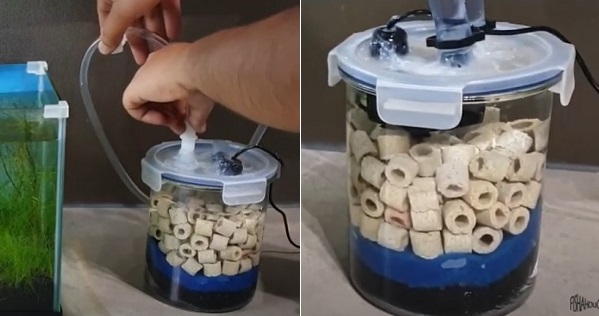Pros and Cons of Ceramic Rings for Aquarium Filtration:
Biological media is mandatory for
every fish tank because it removes all the toxic pollution released from fish
poop, uneaten food, dead plants, & other debris. Bio media offers space for
the growth of useful bacteria. Without bio media, the aquarium water contains
heaps of ammonia because useful bacteria that colonize over the bio media, is
required for breaking down ammonia into nitrites & nitrates. Nitrates are
not as harmful as nitrites & ammonia. Fish can live with nitrates but
higher levels of nitrates are still dangerous for the life of fish.
Different types of bio media are
available in the market. One of the top bio media is Ceramic Rings. The main
advantage of Ceramic Rings over ordinary bio media is that it not only breaks
down ammonia into nitrates but also consumes nitrates via denitrifying bacteria.
Heaps of nitrifying bacteria are produced when you cycle your aquarium.
Nitrifying bacteria are responsible for consuming ammonia & nitrites.
However, they cannot wipe out nitrates from the water. For removal of nitrates
from the aquarium water, denitrifying bacteria is required. Heaps of
denitrifying bacteria live inside the pores of the Ceramic Rings where oxygen
is not present. Denitrifying bacteria can only survive in places where oxygen
is not available.
Ceramic Rings:
Ceramic Ring is a very popular
bio media, created by firing ceramic at very high temperatures. The heat
creates numerous little pores in the ceramic.
Pros of Ceramic Rings for Aquarium Filtration:
- The outer surface of the ring consists of numerous tiny pores. Inside these pores, denitrifying bacteria live.
- The complex porous structure of the ring will ensure that dirty water is fully cleaned when it passes through the ring. The outside surface of the ring consists of many tiny holes, & the middle part of the ring consists of a large hole. Water flows over the outer surface, & through the centre of the ring, that enhances the chances of interaction between toxic chemicals & useful bacteria for efficient cleaning.
- The large surface area of the Ceramic noodle lets useful bacteria build colonies for wiping out ammonia & nitrites. In addition, denitrifying bacteria lives inside the pores for removal of nitrates.
- It is recommended to add ceramic rings to the filter, & they should be placed after mechanical filter media otherwise dirt will clog the pores of the Ceramic noodles, & reduce their cleaning potential. Mechanical filter media will trap all the solid impurities, & only let chemicals flow through it. Toxic chemicals will react with the useful bacteria, & only clean water will flow out of the filter.
- The low price of Ceramic noodles make them an ideal choice for aquarists.
- Ceramic noodles need low maintenance.
- Ceramic noodles do not affect the characteristics of water.
Cons of Ceramic Rings for Aquarium Filtration:
Despite many pros, Ceramic rings
have a few cons.
- The pores of the rings can be easily clogged, if filtration media are not properly ordered. It is very important to install Ceramic noodles after mechanical filtration media. Therefore, water free of physical impurities will flow through the Ceramic rings.
- If pores of Ceramic noodles are blocked, then their effectiveness will be reduced.
- If holes are fully blocked, then it is mandatory to replace Ceramic rings. If you add fresh Ceramic noodles, then it is recommended to recycle your aquarium for building useful bacteria.
- Ceramic noodles are required for the removal of every toxic chemical from the water but even then, it is recommended to change partial water on a regular basis because fresh water contains minerals. Fish & live plants need these minerals.


Post a Comment